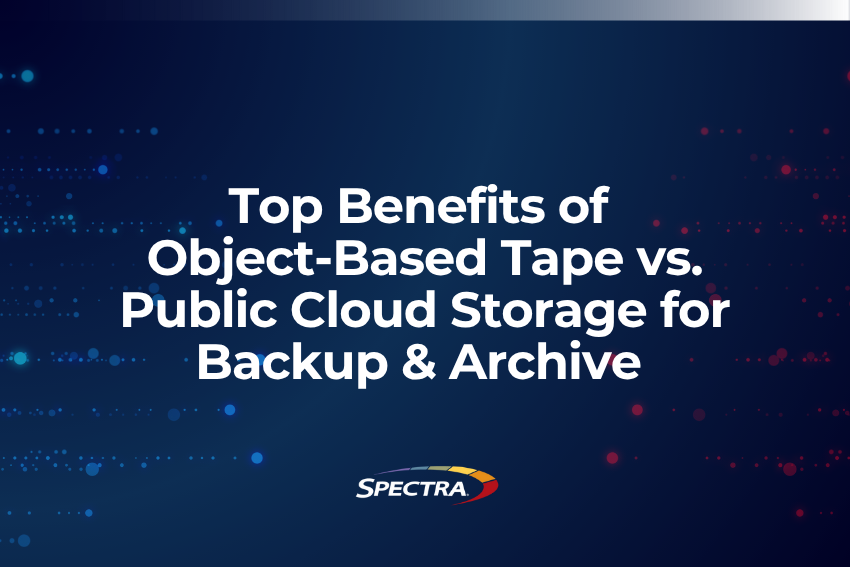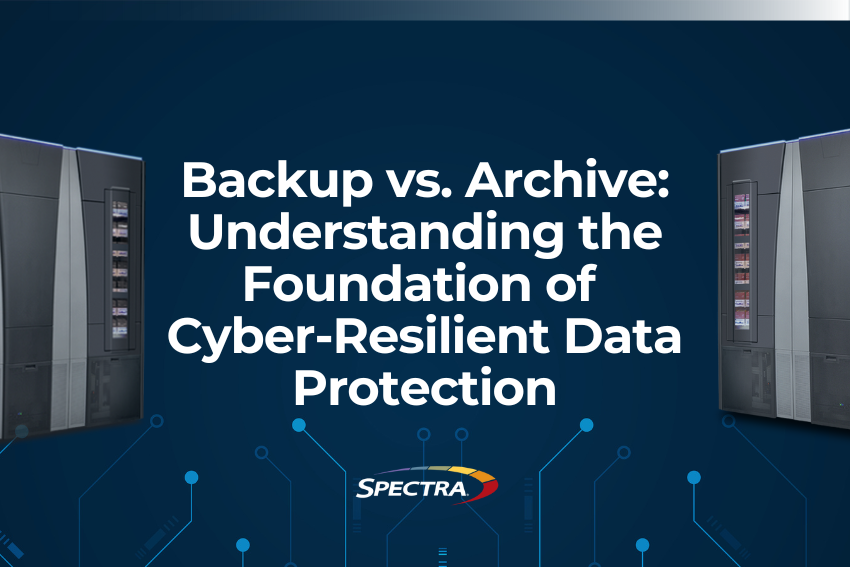
By Jenna Blumenfeld
Explore the technical and business advantages of object-based tape — one of the most exciting innovations in perpetual archive data management — over the public cloud.
Managing data growth has become a high-stakes challenge for IT leaders. Every year, organizations are generating, analyzing, and retaining more data than ever before — driven by AI, video, IoT, and regulatory requirements.
Yet budgets aren’t keeping pace. The result is a growing imbalance: petabytes of information must be preserved securely, accessed efficiently, and stored cost-effectively for decades.
For many, the public cloud appeared to be the easy answer. Promising low entry costs and limitless scalability, it offered short-term relief to overloaded infrastructures.
But the economics have proven deceptive. Hidden retrieval and egress fees, unpredictable monthly bills, and sluggish data access have turned what seemed like an affordable solution into an expensive trap. As a result, IT decision-makers are increasingly re-evaluating where and how they store their most valuable digital assets — seeking solutions that deliver scalability, transparency, and long-term control.
According to a VMware report, nearly 70% of IT decision-makers are now considering bringing their data workloads back in-house. What was once lauded as a game-changer for data storage is increasingly viewed as a costly headache.
Here are six reasons why object-based tape offers a smarter approach to backup and archiving, and how this storage methodology is helping organizations attain secure scalability, manageable costs, regulatory compliance, and ultimately, peace of mind.
1. Massive Scalability
By 2030, the world’s secondary storage needs may reach 14 zettabytes, according to the Horison Information Strategies Tape Market Outlook 2025. (That’s 14 followed by 21 zeros — or 14,000,000,000,000,000,000,000 bytes!)
In file storage systems, growing data volumes also increase complexity, making it difficult to find and interact with data.
Object-based storage simplifies large archive management, allowing IT leaders to use applications to quickly browse metadata without directly accessing the underlying data, making retrieval fast and efficient.
By combining object-based storage with tape, users can achieve high-density and ultra-low energy requirements. This reduces traditional storage barriers like data center size constraints and electricity costs.
2. Security & Ransomware Protection
Tape is a highly secure, immutable medium — ideal for backup and recovery, archive, and disaster recovery. In addition to encryption options for both library access and the media itself, tape provides an air gap. After data is written to tape, it can be stored offline, where it is physically disconnected from networks, making it resistant to electronic incursions such as cyberattacks and ransomware.
With AI arming cybercriminals to evade detection and exploit vulnerabilities, the question is no longer if an attack will happen — but when. Preparation against bad actors is no longer optional, it is essential.
A hybrid storage strategy blends the security of on-premises tape with the usability of cloud systems, ensuring that valuable data remains safe and recoverable, even after an attack.
3. Cost Effective, With No Hidden Fees
According to the Wasabi Global Cloud Storage Index, 62% of organizations exceeded their budgeted cloud storage spending in 2025 and one in four massively exceeded it.
While the public cloud may seem like a low-cost option at first blush, expenses can quickly balloon as organizations scale data volumes. Enterprises often face complex pricing models that include hefty charges for data retrieval, API calls, replication requests, egress fees, and more.
Let’s examine the source of one such fee: When data is stored in “cold” cloud infrastructure, for instance, it often must pass through “warmer” storage layers first. Like a taxi meter running at a red light, it incurs incremental fees as it travels to its intended destination.
For large-scale archives, these charges are significant, straining data management coffers across organizations and industries.
In contrast, an object-based tape hybrid solution offers stable, predictable expenditures with no hidden fees — making it possible to store massive volumes at a fraction of the cost of cloud-only options.
4. Unmatched Simplicity
Object-based tape from Spectra Logic is Amazon S3- and Amazon S3 Glacier–compatible. Applications that already use these interfaces can easily adopt object-based tape without changes.
This enables data managers to deploy a true hybrid cloud solution using familiar protocols and tools.
“The adoption of industry-standard interfaces is fueling the continued growth of tape data storage solutions,” explains David Feller, Chief Technology Officer at Spectra Logic. “With Amazon S3-compatible object-based tape, organizations can use tape as if it were any other type of object storage.”
In practice, this means IT teams can deploy tape into existing workflows without retraining staff or re-engineering applications, making adoption nearly frictionless.
5. Data Sovereignty
Remember that 1990s public service announcement that asked: “It’s 10 p.m. Do you know where your children are?” It served as a powerful reminder to keep track of what matters most.
Let’s ask a similar question to data managers: “Do you know where your data resides?”
For those relying solely on public cloud infrastructure, the answer can be unclear. Data may be distributed globally across multiple sites, raising compliance and governance concerns. Regulations such as HIPAA, GDPR, and SEC 17a-4 only increase the importance of knowing where archives live.
With a hybrid on-premises solution, you know exactly where your most valuable data lives. This supports backup and disaster recovery strategies that follow best practices such as geographic redundancy and storage across at least two media types — and peace of mind for data managers.
6. Multi-Tenant Capabilities
Object-based tape storage supports both single- and multi-tenant environments with secure data partitioning. This is ideal for organizations with diverse needs, such as universities or research institutions, or large enterprises with shared IT services.
For example, a university’s athletic department may archive petabytes of high-resolution video from iconic games and training sessions, while a physics high-performance computing lab generates equally massive datasets from experimental research. Both departments can manage their data independently within a shared tape infrastructure, simplifying storage workflows.
Object-based tape systems enable logical separation, robust security, and cost efficiency — advantages harder to achieve with public cloud, where data segregation and cost control are more limited.
Learn More About Object-Based Tape
Across all industries, tape is already a ubiquitous data storage strategy.
At Spectra, we focus on making tape increasingly accessible for modern IT environments with smart solutions, innovative technology, and legendary worldwide customer support.
Hybrid solutions with object-based tape widen these capabilities to a broader audience, serving a range of emerging and evolving use cases.
As cloud bills rise and cyber risks intensify, object-based tape offers a clear path to resilient, cost-effective archives. Now is the time to rethink your long-term storage strategy.






